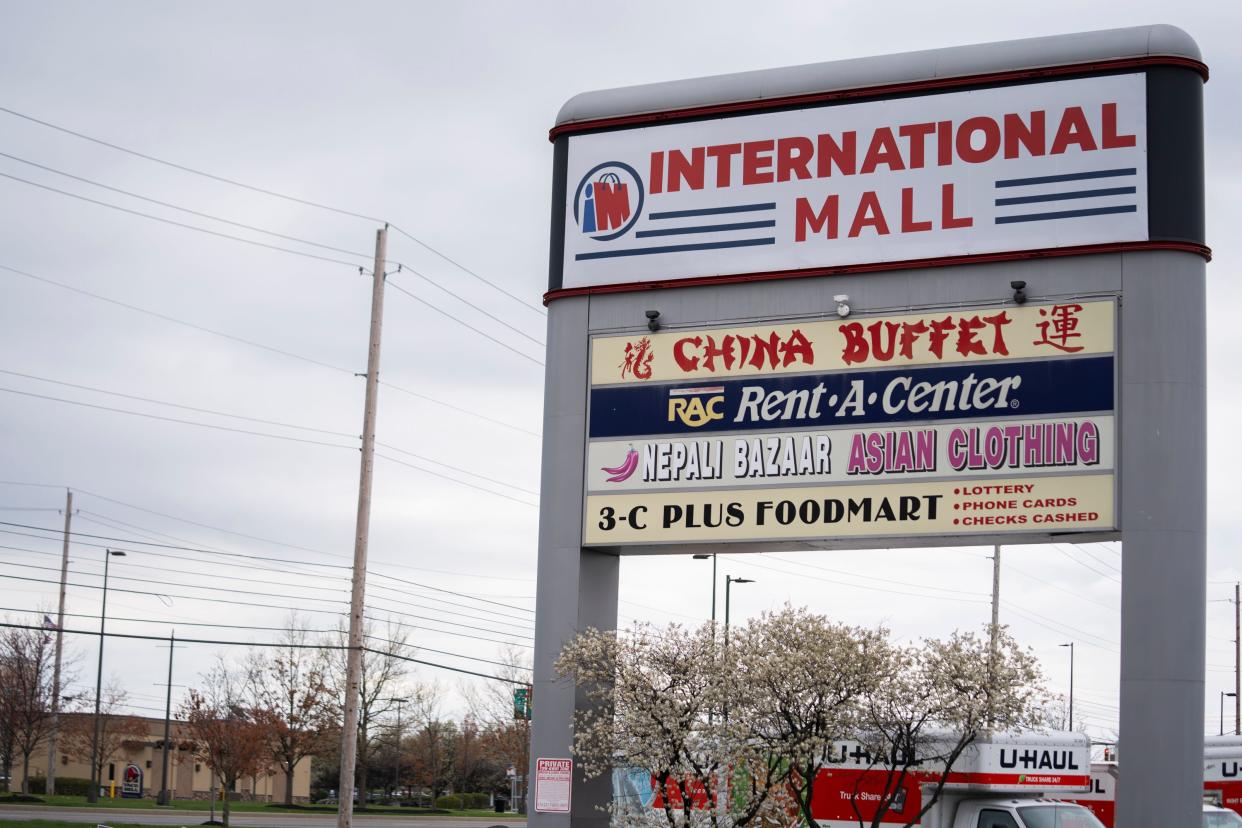Immigrants are helping drive Columbus' population growth and its economy, say experts
Kikandi Lukambo has reinvented himself many times in his life.
After war forced him, his parents and siblings to flee their home in the Congo, he became a tailor, catering to the fashionable ladies of Kampala, the Ugandan capital.
Nearly a decade later, in 2015, the U.S. Refugee Admissions Program resettled Lukambo in Columbus. He quickly found a job with a perfume manufacturer, then at a distribution warehouse.
Recently, he founded a transportation business that shuttles other immigrant workers — including people from Somalia, Afghanistan, Syria and elsewhere — to and from their workplaces in Greater Columbus.

Sitting in Kivu Transportation Services’ small office in the Northland neighborhood recently, Lukambo, 37, spoke of his gratitude for the opportunities Ohio has afforded him.
“(Ohio) has a very good reputation of employment," he said. "We have the best life here."
Lukambo, who became an American citizen in 2022, also found love locally. Four months ago, he and his fiancée Wedny Dauphin, an immigrant from Haiti, became parents to a baby boy.
Foreign-born people like Lukambo and Dauphin have been essential to Columbus’ population growth and economy in recent years, according to new government data and local economists.
Because native-born Americans are having fewer children and are moving away from Ohio, the state’s population shrunk by about 13,000 between mid-2020 and mid-2023. But it would have shrunk by about 61,000 more if it weren’t for the flow of immigrants moving in, according to Census Bureau estimates.
In Columbus — Ohio’s fastest-growing metro area — international immigrants accounted for more than half of the population growth over the three years, according to the bureau.
This includes everyone from refugees like Lukambo to high-skill workers on H-1B visas, people admitted based on family ties and undocumented individuals. Franklin County’s largest foreign-born groups come from Asia, followed by Africa and then Latin America.
Mark Partridge, an urban economist at Ohio State University, told The Dispatch that population expansion comes with certain growing pains, such as greater demand for housing and public services like schools.
But he said immigrant-driven population growth is a “first-order factor” benefitting the region’s economy — in contrast to shrinking cities like Youngstown, where relatively few immigrants settle.
“Population growth drives demand for businesses. … And (likewise), population growth (increases) the supply of workers that firms want to hire,” he said.
“It’s easy to scapegoat immigrants. … However, if it wasn't for immigration in a state that struggles retaining population like Ohio, we would have much faster population loss. Once you start losing population, it's pretty easy to turn into a vicious cycle downward.”
From driving student to professional driver
Lukambo had never driven a car before moving to the U.S. nine years ago. Soon after arrival, he and his brother paid another Congolese refugee $1,000 to teach them how to drive so they could get to work, he said.
While his job at a warehouse provided some stability, Lukambo dreamed of starting his own business. At first, he thought of starting a language school for other immigrants, since he speaks English fluently. But then he realized that very few of his potential students would have a means of transportation to get to class. This insight led him to start the transportation company, which now has contracts with a sawmill in Newark, the refugee resettlement agency Jewish Family Services and elsewhere.
Lukambo and Dauphin drive vans for their company while also working other jobs — Lukambo is a weekend supervisor at a Macy’s warehouse in Groveport, and Dauphin works for Cheryl’s Cookies in Westerville.
“I don’t really take time off,” Lukambo, who works seven days a week, said with a chuckle.
How do immigrants drive economic growth?
Bill LaFayette, an economist who owns the local consulting firm Regionomics, told The Dispatch that immigrants are good for the economy in part because Columbus-area firms are in desperate need of workers.
“Our employment growth has been somewhat stunted since mid-2022, just because there aren't enough workers,” LaFayette said. “(Immigrants) tend to be younger than the population as a whole, and they tend to be more likely in the labor force.”
LaFayette said that immigrants are also significantly more likely than native-born people to become entrepreneurs.
“My guess is that (is because) they have pulled up stakes and moved to a completely different part of the world, and they are inherently risk-takers,” he said.
He pointed to Morse Road as an area with an abundance of immigrant-owned businesses, which he said retain a greater percentage of their sales revenue within the local economy than national chains.

Studies also show that immigrants are a boon to the local tax base.
In 2019, immigrants in the Columbus metro area paid $712.4 million in state and local taxes, according to a study commissioned by the city of Columbus and Franklin County.
And a new study by the U.S. Department of Health and Human Services found that refugees and asylees contribute more on average in tax revenue than they cost in expenditures to federal, state and local governments.
Does immigration-led growth cause housing, other shortages?
LaFayette said immigrants contribute to the growing demand for affordable housing in Columbus, but this is an inevitable byproduct of economic growth — no matter where workers are coming from.
“Whether you come from Cleveland or Calcutta, you still need a place to live,” he said.
Skeptics of immigration sometimes raise concerns about immigrants taking jobs away from native-born people, but LaFayette said this is not a concern in central Ohio, at least not right now.
“Our unemployment rate’s barely above 3%. … All you've got is pretty much frictional unemployment — people going from one job to another,” he said. “We need everybody we can get.”
Another criticism is that even if immigrants do not take jobs away from native-born Americans, by expanding the labor pool, they can drive down wages in certain fields.
Partridge, the Ohio State professor, said economists still debate the size of this effect, though most agree it is small. He believes that low-wage workers are most affected, but “it's not a massive effect.” On the other hand, he said immigrants often come up with innovations or insights that help firms expand into markets abroad — boosting wages for high-skill workers.

Columbus' immigrants are clients for his business
As Columbus' foreign-born population continues to grow, Lukambo hopes to expand his business by partnering with more employers and by offering driving classes for newly arrived immigrants.
“I'm under obligation to help other people — because I don't like to see people struggling the way I struggled with at the beginning when I came here,” he said.
Lukambo said many of his relatives and friends from his refugee camp in Uganda resettled elsewhere in the U.S. But when they come to visit Columbus, he makes the pitch for them to relocate here — which, increasingly, they accept.
“(Congolese) people used to say, ‘Ohio is like a village. Ohio is not a really good state.' But with time ... a lot of refugees and a lot of immigrants are coming here. ... With the economy, you can be at least successful with one job, and you manage your time and you feel like you are having a good life," he said.
"Ohio is growing."

More: Ohio's current immigrant population much more diverse, still well below national level
Peter Gill covers immigration and new American communities for The Dispatch in partnership with Report for America. You can support work like his with a tax-deductible donation to Report for America here:bit.ly/3fNsGaZ.
pgill@dispatch.com
This article originally appeared on The Columbus Dispatch: Immigrants driving Columbus' population growth, economy
